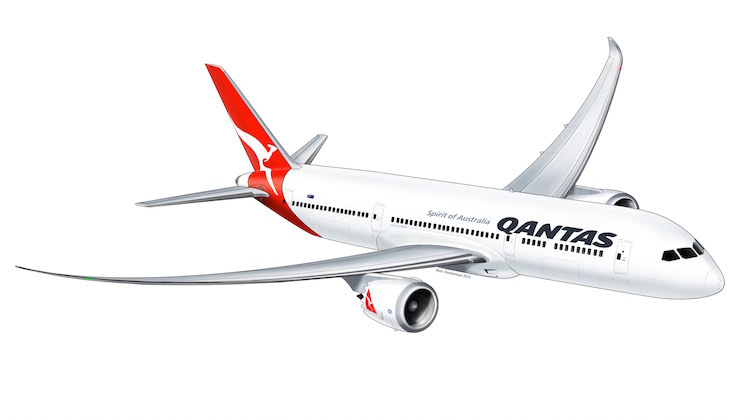
Qantas has confirmed an order for eight Boeing 787-9 Dreamliners and will return $505 million to shareholders after reporting a return to profitability in 2014/15.
The airline group reported a statutory net profit after tax of $557 million for the 12 months to June 30 2015, a multi-billion dollar turnaround from the $2.853 billion loss in the prior year.
The result was broadly in line with market estimates of net profit in the vicinity of $600 million.
Underlying profit before tax, which the airline regards as the best indication of financial performance, rebounded strongly in 2014/15 to $975 million, compared with the $646 million pre-tax loss in the prior corresponding period.
Analysts had expected Qantas to post an underlying profit before tax of close to $1 billion for the 12 months to June 30.
Qantas said it had achieved $1.1 billion in cost cutting in its $2 billion transformation program that was announced in December 2013, including $894 million in 2014/15.
“We are halfway through the biggest and fastest transformation in our history,” Qantas chief executive Alan Joyce said in a statement.
“Without that transformation, we would not be reporting this strong profit, recommencing shareholder returns, or announcing our ultra-efficient Dreamliner fleet for Qantas International.
“We have reshaped our business for a strong, sustainable future – and because we moved quickly and made tough decisions early, we have strong foundations to build on.”
Revenue rose three per cent to $15.8 billion, Qantas said on Thursday.
Qantas said it would order eight 787-9s, with the first four to arrive in the 2017/18 financial year and the next four in 2018/19. The Dreamliners would gradually replace five of the airline’s Boeing 747-400s.
The airline group said it had 15 further options and 30 purchase rights for more 787s.
“This milestone acquisition marks the scale of our turnaround and looks ahead to a new era for our iconic international airline,” Joyce said.
“Because the 787 is smaller than the jumbos it will gradually replace, it gives us the flexibility of having more aircraft without significantly changing our overall capacity.”
Joyce had set out three criteria for any potential Dreamliner order, namely Qantas International’s return to sustainable profitability, repaying $1 billion of debt and establishing appropriate staff conditions to ensure the business case for the new aircraft type stacked up.
Qantas said it would conduct $505 million capital return to shareholders, equivalent to 23 cents per share, by November. The payment was subject to shareholder approval at the company’s annual general meeting in October.
All of Qantas’s operating segments were profitable in 2014/15.
Qantas Domestic reported underlying earnings before interest and tax (EBIT) of $480 million, compared with $30 million in the prior year.
Meanwhile, Qantas International posted underlying EBIT of $297 million, a turnaround from an underlying EBIT loss of $497 million in 2013/14.
Underlying EBIT for the Jetstar group of airlines came in at $230 million, a turnaround from a loss of $116 million in the prior corresponding period.
While Qantas did not offer profit guidance for the first half of 2015/16, the company did offer some capacity forecasts for the period ahead.
Qantas and Jetstar’s domestic capacity was expected to increase between zero and one per cent in the first half of 2015/16, reflecting the flat capacity growth from all of the nation’s domestic carriers in recent times.
Overall, the airline group expected to boost capacity by between three and four per cent in the first half 2015/16.
Qantas executives were due to hold a media conference later on Thursday.










